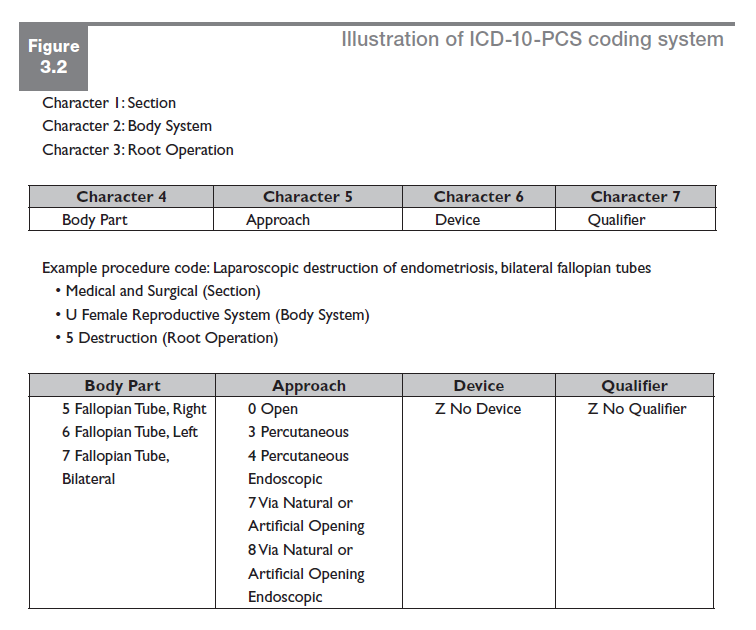Guest post: The anatomy of the ICD-10-PCS code
 Editor’s note: This is part one of a series reviewing rules for ICD-10-PCS code assignment. To gain the most from this series, have an ICD-10-PCS manual in front of you and flip to the various sections for each step to see how the process works.
Editor’s note: This is part one of a series reviewing rules for ICD-10-PCS code assignment. To gain the most from this series, have an ICD-10-PCS manual in front of you and flip to the various sections for each step to see how the process works.
by Joe Rivet, JD, CCS-P, CPC, CEMC, CHC, CCEP, CHRC, CHPC, CICA, CPMA, CAC, CACO
Each character in the ICD-10-PCS code represents a specific element. The anatomy of the code is the following:
- First character: refers to which section (i.e., Medical and Surgical, Obstetrics)
- Second character: refers to the body system (i.e., Central nervous system)
- Third character: refers to the root operations (i.e., Bypass, Excision)
- Fourth character: refers to the body part (i.e., coronary vein, left leg)
- Fifth character: refers to the approach of the procedure (i.e., open, percutaneous)
- Sixth character: refers to the device (i.e., autologous tissue substitute)
- Not all procedures will have a device, and in which case, the device would be “Z”
- Seventh character: refers to the qualifier (i.e., diagnostic)
- Not all procedures will have a qualifier, in which case, the qualifier would be “Z”
After you have identified the first three or more characters in the Alphabetic Index, then move to the appropriate ICD-10-PCS table to complete the code. You need a complete, seven-character procedure code, and the remaining characters will be found within the selected table.
Within the chosen table, there are several combinations of character choices for each of the remaining characters four through seven.
When using a table, you can only select codes four through seven from the same row. Meaning, the body part, approach, device, and qualifier must all be in the same row within a table. You cannot have a body part in one row and select an approach from another row in the same table; the code would be invalid.

Editor’s note: Rivet is a partner with the American Regulatory Compliance Society in Grand Haven, Michigan. His experience includes conducting fraud, waste, and abuse audits across a wide variety of services and provider settings. He is a national speaker and has published two books along with numerous articles. Opinions expressed are that of the author and do not necessarily represent HCPro, ACDIS, or any of its subsidiaries. Want to write for the ACDIS Blog? Contact ACDIS Associate Editor Carolyn Riel today!
